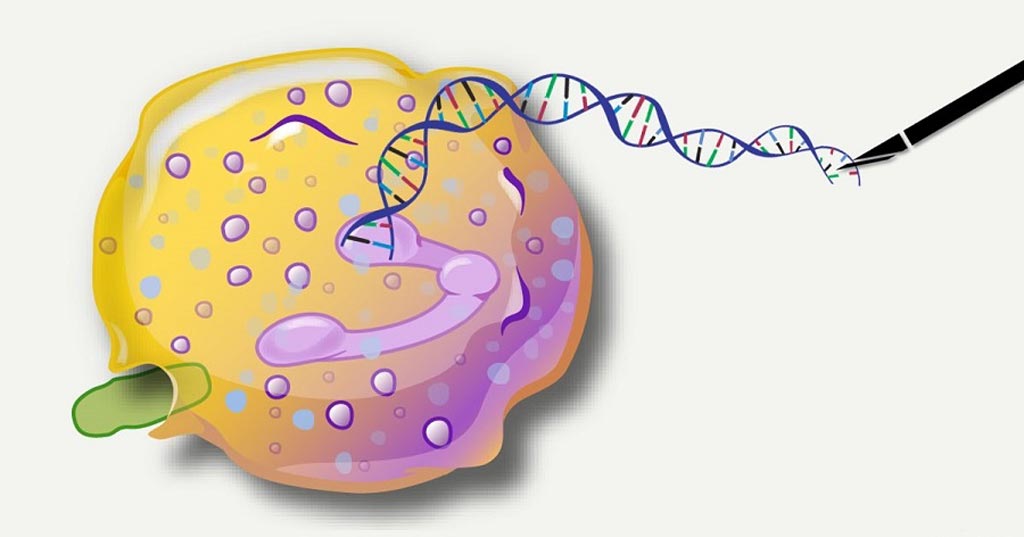In vivo CRISPR/Cas9 Therapy Prevents Arrhythmias in Model
By LabMedica International staff writers
Posted on 14 Nov 2018
Delivery of the CRISPR/Cas9 gene-editing tool via an adeno-associated viral vector (AAV) directly to heart cells in a mouse model of catecholaminergic polymorphic ventricular tachycardia was found to efficiently and specifically prevent development of arrhythmias.Posted on 14 Nov 2018
CRISPR/Cas9 is regarded as the cutting edge of molecular biology technology. CRISPRs (clustered regularly interspaced short palindromic repeats) are segments of prokaryotic DNA containing short repetitions of base sequences. Each repetition is followed by short segments of "spacer DNA" from previous exposures to a bacterial virus or plasmid. Since 2013, the CRISPR/Cas9 system has been used in research for gene editing (adding, disrupting, or changing the sequence of specific genes) and gene regulation. By delivering the Cas9 enzyme and appropriate guide RNAs (sgRNAs) into a cell, the organism's genome can be cut at any desired location. The conventional CRISPR/Cas9 system from Streptococcus pyogenes is composed of two parts: the Cas9 enzyme, which cleaves the DNA molecule and specific RNA guides that shepherd the Cas9 protein to the target gene on a DNA strand.

Image: A graphic representation of DNA editing (Photo courtesy of the U.S. National Institutes of Health/Jill George).
The ryanodine receptor type 2 (RYR2) protein functions as the major component of a calcium channel located in the sarcoplasmic reticulum that supplies ions to the cardiac muscle during systole. Autosomal-dominant mutations in RYR2 are responsible for about 60% of all catecholaminergic polymorphic ventricular tachycardia (CPVT). Dysfunctional RyR2 subunits trigger inappropriate calcium leakage from the tetrameric channel resulting in potentially lethal ventricular tachycardia. In vivo CRISPR/Cas9-mediated gene editing has been suggested as a promising strategy that could be used to eliminate the disease-causing Ryr2 allele and hence reverse CPVT.
Investigators at Baylor College of Medicine (Houston, TX, USA) sought to determine if somatic in vivo genome editing using the CRISPR/Cas9 system delivered by AAV vectors could correct catecholaminergic polymorphic ventricular tachycardia arrhythmias in mice heterozygous for the RyR2 mutation R176Q (R176Q/+ mice). In order to accomplish this, guide RNAs were designed to specifically disrupt the R176Q allele using the SaCas9 (Staphylococcus aureus Cas9) genome editing system. AAV serotype 9 was used to deliver Cas9 and guide RNA to neonatal mice by single subcutaneous injection at postnatal day 10.
Results published in the August 8, 2018, online edition of the journal Circulation Research revealed that none of the R176Q/+ mice treated with AAV-CRISPR developed arrhythmias, compared with 71% of R176Q/+ mice receiving control AAV serotype 9. Total Ryr2 mRNA and protein levels were significantly reduced in R176Q/+ mice, but not in wild-type littermates. Targeted deep sequencing confirmed successful and highly specific editing of the disease-causing R176Q allele. No detectable off-target mutagenesis was observed in the wild-type Ryr2 allele, which confirmed a high degree of specificity for SaCas9 in vivo.
"For this particular study, we were inspired by a young patient who has been affected by an inherited cardiac arrhythmia disorder called catecholaminergic polymorphic ventricular tachycardia (CPVT). Our patient has recurring arrhythmias - irregular and fast heartbeats - and fainting episodes," said senior author Dr. Xander Wehrens, professor of molecular physiology and biophysics at Baylor Medical Center. "Several family members had near fatal arrhythmias or sudden cardiac death. Current treatment options including anti-arrhythmic drugs and an implantable defibrillator - a device to correct certain irregular heartbeats - are not optimal for this patient."
"We are particularly excited that we were able to selectively disrupt the disease-causing R176Q mutated gene without adversely affecting the healthy gene variant in the genome," said Dr. Wehrens. "We are now testing the same approach in stem cells from patients with the same condition, to analyze efficacy and safety in human cells. This may enable us to develop this approach for future therapeutic studies in patients with this arrhythmia syndrome."
Related Links:
Baylor College of Medicine














